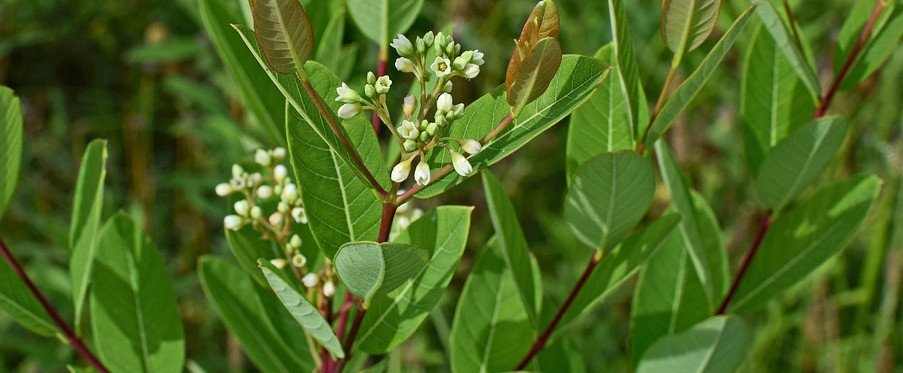Apocynum
PROCESSABILITY OF APOCYNUM
Hemp dogbane is known for its use as cordage. Before cotton was introduced and cultivated, around 700 A.D., leaf and stem fibers, hair or wool from dogs or wild animals, bird feathers, animal skins, or human hair were used to create prehistoric cordage. Dogbane fibers have been found in some archeological sites thousands of years old.
The native people from many nations in many nations produced various useful items from the hemp fibers. They made cordage and thread from the plant with no other equipment than their hands and thighs. Fibers of the dogbane plant were rolled together to make a functional material stronger than cotton. The twine was excellent for making fishing lines and nets because it keeps its strength under water and does not shrink. It was also used in the manufacture of many other items, including deer and rabbit nets, slings for hunting small game, nooses for snaring grouse and other game birds, hide stretchers, bowstrings, moccasins, clothing, straps, woven bedding for baby cradles, wheels used in a type of dart game, carrying nets, and cat-tail mats.
The stems were harvested late fall, after frosts have caused the sap to drop into the plant's perennial root base, and the leaves turn to yellow and fall from the stem. At this stage, the reddish-brown stalk becomes stiff and can easily be clipped from the root base flush to the ground. Dogbane stalks were also collected in winter, when the stalks are dry and brittle. Dry stalks are easiest to work, but if allowed to stand in the field through the winter and into spring, the fibers weaken. The harvested plants were bundled by the lower ends for carrying.
The cordage fibers are found in a layer between the thin outer skin and the woody, hollow center of the stem. Carefully scraping with an obsidian flake, chert spall, or deer rib removed the outer bark from the fibers. The top spreading branches were trimmed off and the stems were flattened between the fingers into four pieces. They were then split open from bottom to top. The length of brittle, woody core was broken into 2 inch pieces and pulled off the fibers by hand until all of the woody material was removed. Then the process of rubbing and rolling the hemp between the hands helped clear away any other skin that still clinged to the fibers. Not everyone scraped the dogbane first. Paiute people and others simply split and broke the dry stalks without scraping, and removed all the outer bark by rubbing. Dogbane and other bast fibers can also be soaked (called "retting") to release the fibers. Retting was used when the bark adhered more tightly to the fibers.
The dogbane fibers were made into twine by twisting and rolling them with the hand on the bare thigh. The hands were kept damp to increase the friction. More stem fibers were joined together by splicing. The short end that needed splicing was overlapped with the new addition of fibers, then rolled together until they were intertwined. An average plant yields about 2 1/2 feet of fiber, but one fourth of this is lost in the splicing process. By splicing the stems together, a continuous length of twine could be produced. A strong rope could be made by plying several lengths of twine together. A good Indian hemp rope is said to have the equivalent strength of a modern hemp rope with a breaking point of several hundred pounds. The twine would keep for many years if stored in a dry place.

